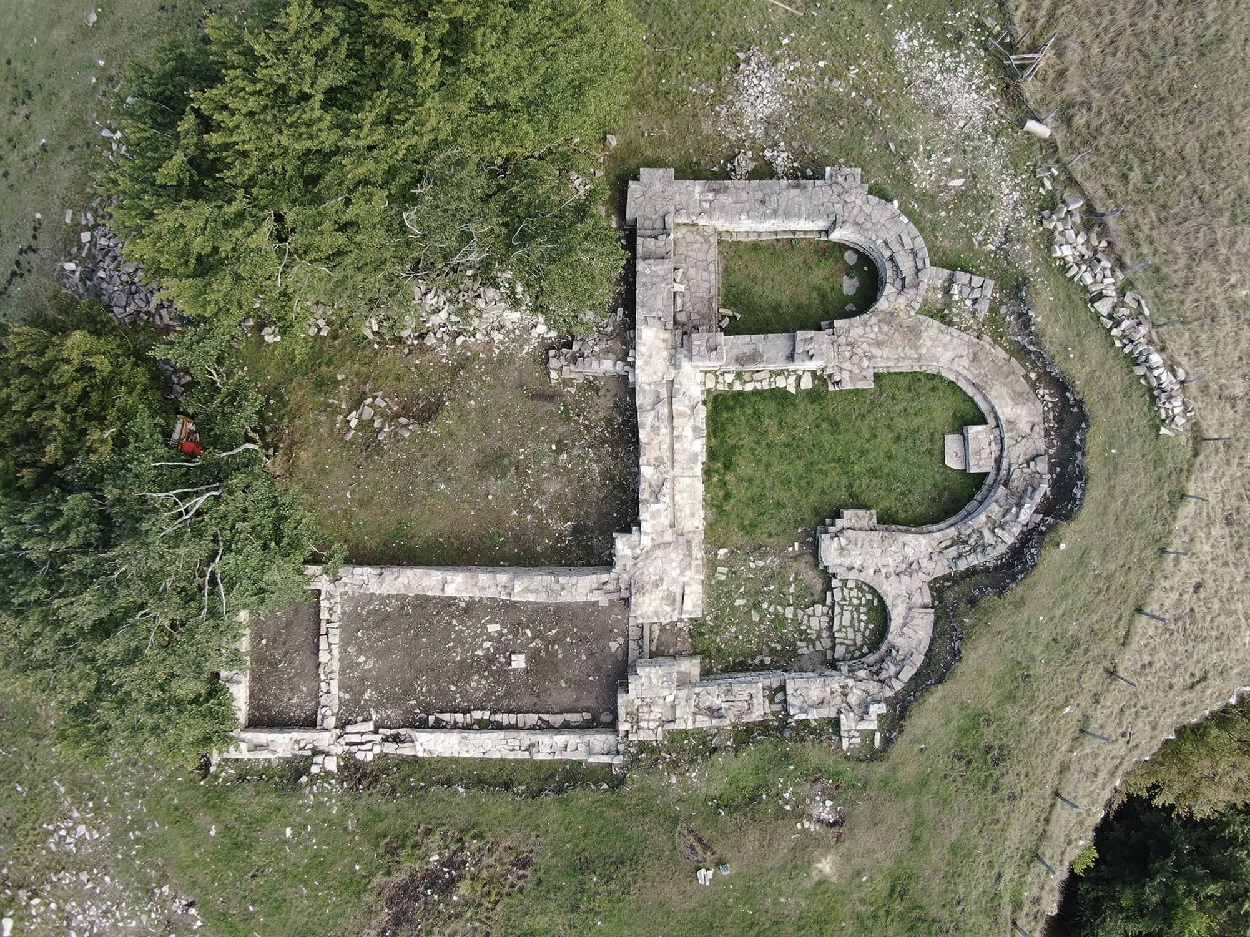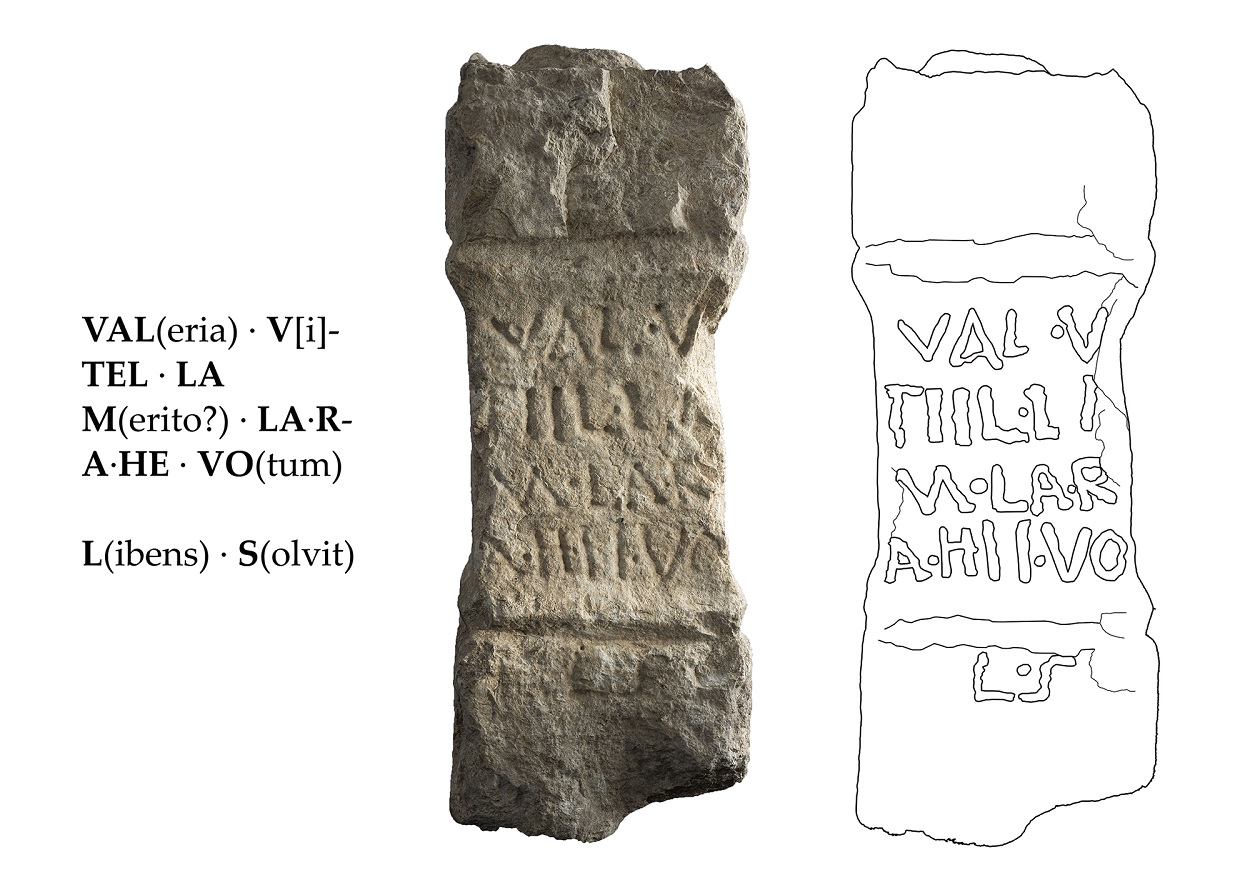Archaeologists from Aranzadi have uncovered a votive altar while excavating the medieval monastery of Doneztebe on Mount Arriaundi, Spain.
The monastery was founded during the 11th century AD in dedication to Saint Stephen (Doneztebe). Previous studies have revealed the preserved foundations and its original plan of three semicircular apses.
In a recent study, archaeologists from Aranzadi excavated a medieval well linked to the monastery which revealed a deposited votive altar dating to the 1st century AD from the Roman period. Experts believe the altar is dedicated to Larrahe, an ancient Basque deity.

Roman altars typically feature a dedication inscribed on the central body, while the upper part has a crown with a small hole known as a focus, used for sacrifices of wine or burning of incense.
The altar is an offering of gratitude written in Latin from Valeria to Larrahe. Only three other altars within the Basque territory have been found attested to this indigenous god or goddess, with the altar from Doneztebe being the only example recovered in the context of an archaeological excavation.
The inscription on the altar reads:
VAL(eria) V[i]
TEL.LA
M(erito?) LA R
A HE VO(tum)
L(ibens) S(olvit)
And is translated as: “Valeria Vitella fulfills her vow to Larrahe freely and deservedly.”
The altar discovery also extends the territorial writings of the Basque language and provides new insights into the origins and evolution of the Basque people and cultural beliefs.
According to Aranzadi: “Arriaundi constitutes an important archaeological site, since it allows us to learn about the evolution of a cultural enclave with various phases ranging from the Roman era, through Late Antiquity, and continuing practically throughout the Middle Ages to the Modern Age.”
Header Image Credit : Aranzadi
Sources : Aranzadi





